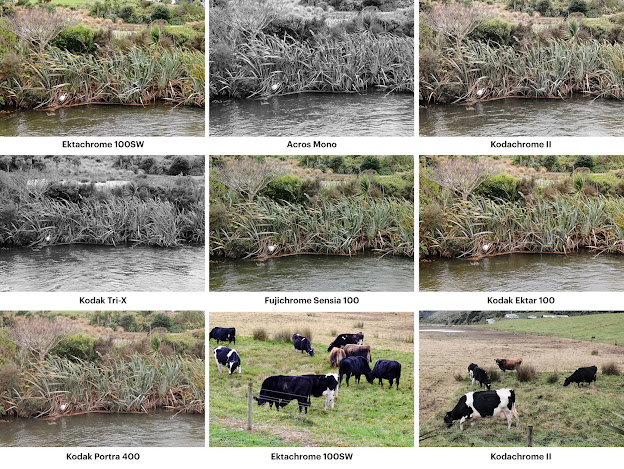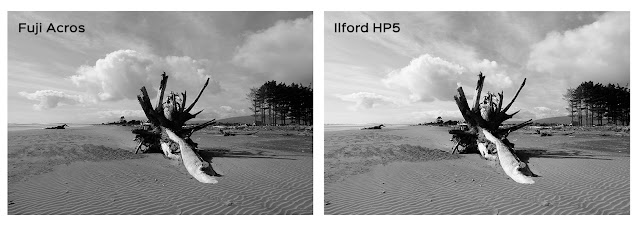WB settings for film simulations in my Fujifilm X-E2
In my last post I discussed 'going 100% Jpeg'. This may sound scary to
some photographers for who shooting Raw is almost a religion (and yes,
that was me too). It's really only been made possible - for me at least -
by shooting with the Fuji custom film simulations (or recipes).
Fujifilm expects you to play around with film simulations and create your own - that's what their X-Raw Studio
software is all about. Unfortunately, my X-E2 is not compatible with
X-Raw Studio (I presume it only works for X-Trans III sensors and
above?). Fortunately, others have done the hard work for me already, and
there are a plethora of film simulations on-line to choose from (check
out the amazing Fuji X Weekly blog).
All sorts
of parameters can be tweaked to create a 'look' you're after; from
highlight and shadow tone, to sharpness and colour - and even grain and
clarity on the latest Fuji camera models (alas, again, not my X-E2!) To
get the very best out of these film simulations, you also need to tweak
the white balance R & B (red and blue) channels to truly dial-in the
colour shifts that some 'films' give. It's well known among film
shooters that Kodak has warmer tones than Fuji, whose films are
generally slightly cooler (bluer). To achieve these colour variables,
the R and B channels can be changed to mimic these tonal variances. So
far so good.
Unfortunately, on most of the Fuji
cameras, these changes to white balance in the R & B channels are a
'global' change. So, for example, if you have Auto WB set, with a +3R
and -2B colour shift, all film recipes that use Auto WB will have
the same shift applied. Annoyingly! This has, fortunately, been fixed
with the X-Pro 3 (and X100F I think?) - but I don't have an X-Pro 3, do
I...😞
Fear not, fellow Fuji user - for there
is a work-around for this... kind of. Since the white balance shift is
global, what you need to do is set different white balances for
each film simulation, applying the correct red and blue channel shift to
each white balance. You can also, of course, choose film simulations
that use the same r&b channel colour shifts. I've set my X-E2 up with a combination of the two. Let me explain...
 |
| The seven film recipes I have currently programmed into my Fujifilm X-E2 |
Currently,
in the seven allowable custom setting slots on the X-E2, I have
Ektachrome 100SW, Acros mono, Kodachrome II, Kodak Tri-X, Fujichrome
Sensia 100, Kodak Ektar 100 and Kodak Portra 400 film 'simulations'
programmed in. Of those, five use the same Auto white balance shift
(Auto +3R, -4B) while two have different WB settings applied with their
own R&B channel shifts.
Remember how I said
earlier that Kodak is known for being a 'warmer' toned film. Look at
the list above. Five of them happen to be Kodak film recipes - four of
which (Ektachrome, Kodachrome, Ektar and Portra) use the same Auto WB as
mentioned above. The fifth is actually the black and white Fuji 'Acros'
simulation. Since mono is less crucial with colour shifts (obviously),
having my Acros film simulation share the Kodak films WB setting isn't
an issue.
Having
said that, of the two film recipes that have other WB settings applied,
one of those just happens to be a Kodak mono film - Kodak Tri-X. This
recipe actually uses a Daylight WB, with +9R and -9B. The final, odd one
out is, not surprisingly, the Fujichrome Sensia recipe. The slightly
'blue' cast associated with many Fuji films is actually achieved by
using the Fluorescent 2 WB with a -1R and -3B channel shift. As can be
seen in the thumbnails above, it certainly gives it a blue tone over the
other Kodak film recipes.
It's early days
using these film recipes, and the above images were taken on a very
overcast and gloomy day - not my normal shooting conditions. Initial
indications, however, are good, with the film simulations rendering the
Jpegs as expected. Ektachrome and Ektar are exhibiting the punchier
colours, while Kodachrome has a more vintage look. Sensia, as mentioned,
has the cooler Fujifilm tones, whereas Portra colours are more subtle
and muted (ideal for portraits). The Acros and Tri-X mono recipes are
fairly similar in overcast conditions. I expect more variance will
become apparent in brighter light?
I won't go
into each individual recipe in this post - it's far too long already 😆
Look for future blog posts where I will discuss each individual recipe
I'm using in greater detail. If anything I've written in this post
doesn't quite make sense, or you want further clarification, don't
hesitate to comment down below and ask me questions. I'm just feeling my
way through using channel shifts as well, so maybe we can work all this
out together?
I do encourage you, if you're
not already, to set some film 'recipes' up in your custom settings on
your camera and start using them. They are a lot of fun, especially if
you're an ex-film shooter who had some favourite film stocks
back-in-the-day. Yes, I know it's still digital. But you can at least pretend you're shooting film - can't you?




Comments
Post a Comment